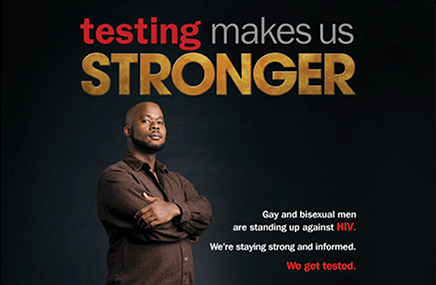National HIV Testing day officially turned 18 in June. While some changes in this space, such as drug cocktails and at-home HIV testing kits, can make it appear that the virus has become somewhat normalized, it’s not going away. Recent CDC data shows that HIV infection rates have held steady.
Across ethnic groups between 2008 and 2010, African Americans remain “disproportionately affected by HIV infection,” notes CDC. Across age groups, the highest rate of infection has been among 25-to-34-year-olds, who accounted for 31% of new infections, followed by the 12-to-24 age group, which made up 26% of new infections.
Because of the age of the virus and its prevalence, the messaging around it has gone beyond prevention and navigated the social dynamics that follow the disease.
“It’s about sexuality, it’s about revealing things about ourselves,” Digitas Health executive creative director Craig Douglass told MM&M. Douglass said that messages that take a clinical approach to the disease can ease around sensitivities.
He’s seeing a “more matter-of-fact approach to the virus,” such as talking about it in terms of a virus that is not just infecting an individual, but what he calls the “idea of a community or communal viral load.” He says the get-tested message is a talking point that shows there “is a way for us all to participate.”
The CDC’s National Testing Day materials, which lead with “Testing makes us stronger,” support this view. The agency offers free tests and provides a testing center locator. The research and health organization’s 2013 HIV messaging notes that 33% of bisexual and gay African-American men are infected, and 59% have “never been tested or aren’t testing enough.”
EVP, executive creative director of copy at health4brands Sung Rno told MM&M that an acceptance of sorts has set in, and created a sense among groups that “It’s not as big of a deal” and the messages need to break through that.
From the August 01, 2013 Issue of MM+M - Medical Marketing and Media








